Thousand Islands Life magazine has featured spectacular views of the River, the islands, the sunsets, the clouds, and the boat traffic. Here from my island home in the Admiralty Group are a few of the small-scale items and curiosities, that are easy to overlook, to add to TIL's collection.
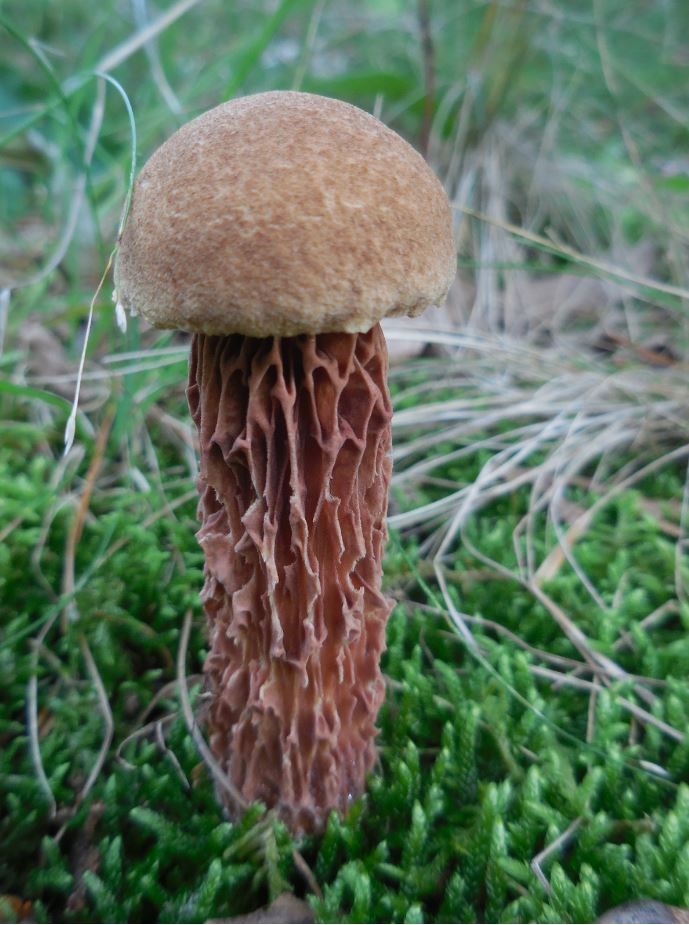

Rain conditions must have been optimal one summer, as we had a variety of mushrooms, including this Russell's bolete. Its stem caught my eye with its fancy chestnut-brown ridges. Its cap seemed to be sprinkled with cinnamon. As it aged the cap expanded into a wider, more patchy-looking bowl.
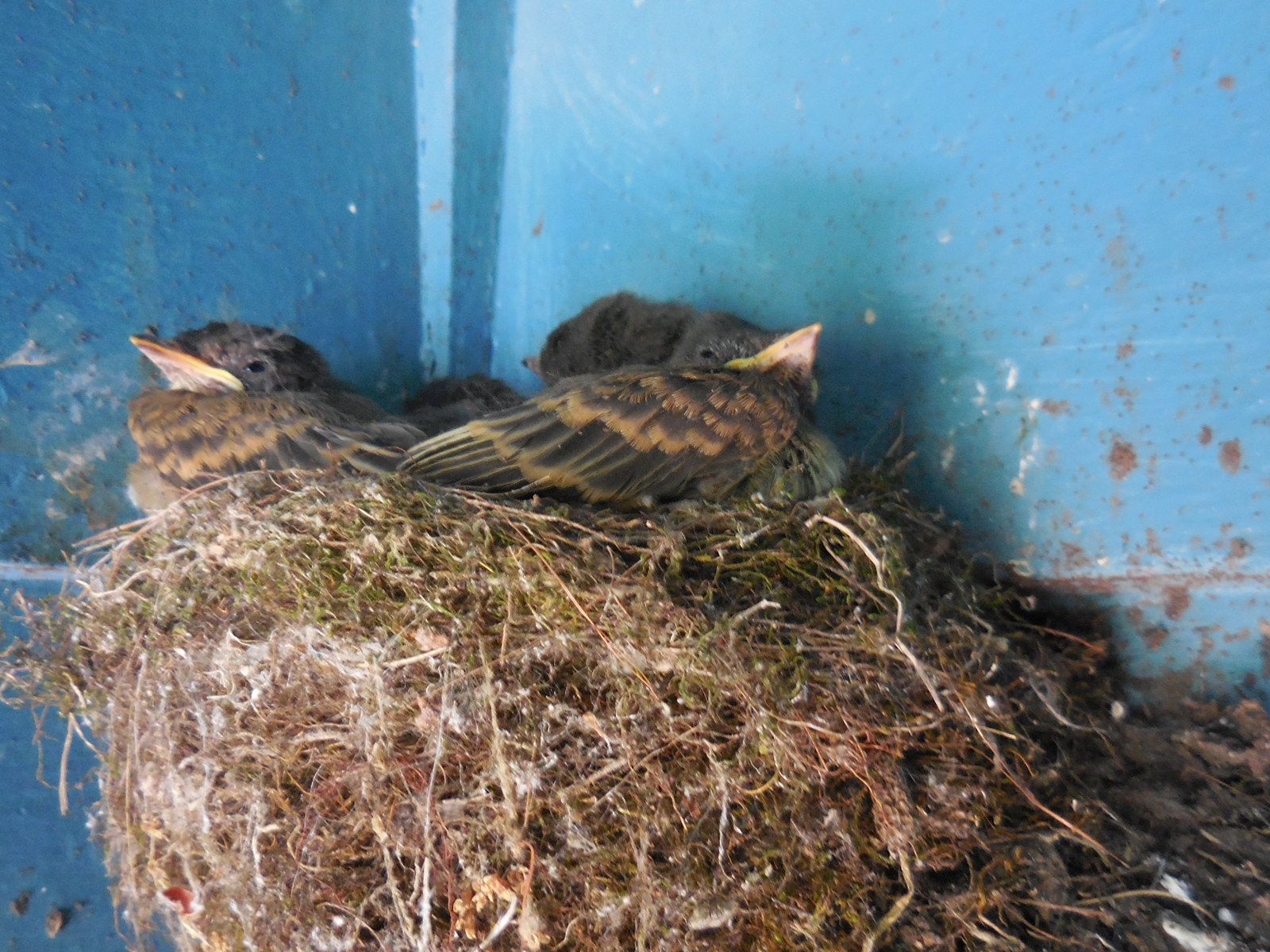
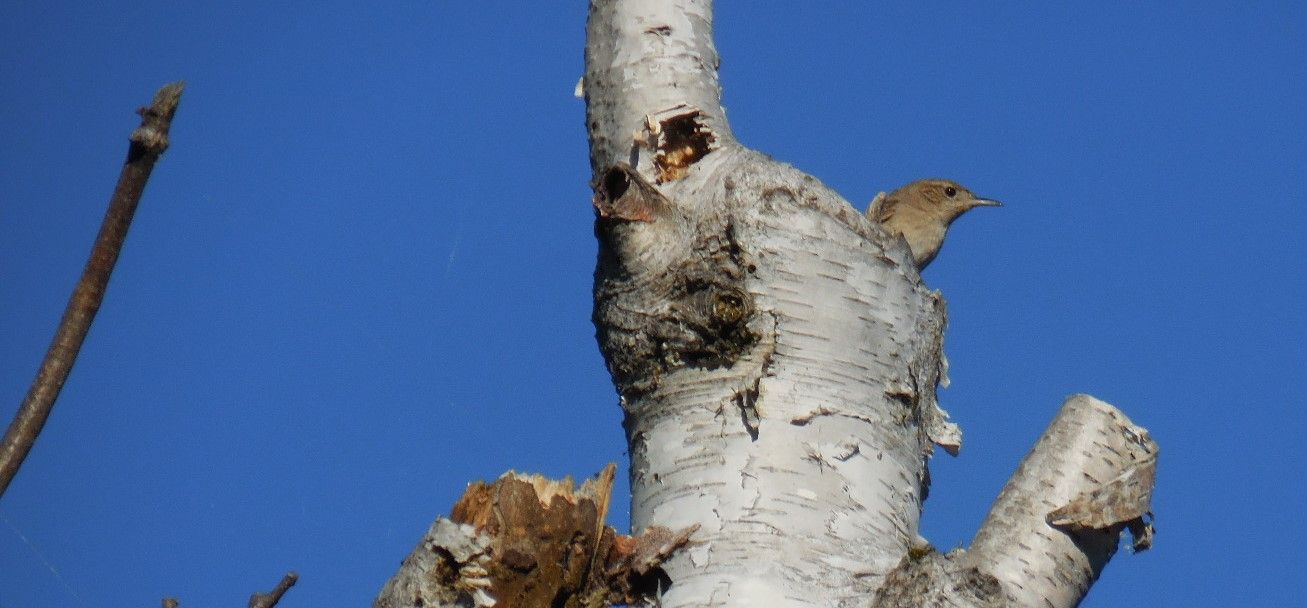
It amazes us that a 1/2" wide door frame and a 1/2" overhanging clapboard at a corner was all the bird needed to attach its nest above the door [engineers take note!]. This brood kept its parents very busy. At the front of the house another bird used the broken-off birch trunk for its nest. The nest must have been open to the sky, but we never saw it or the babies. The ever cautious parents checked for danger before landing at, or leaving the nest, when feeding their babies. They ceased their beautiful songs once the nesting started.
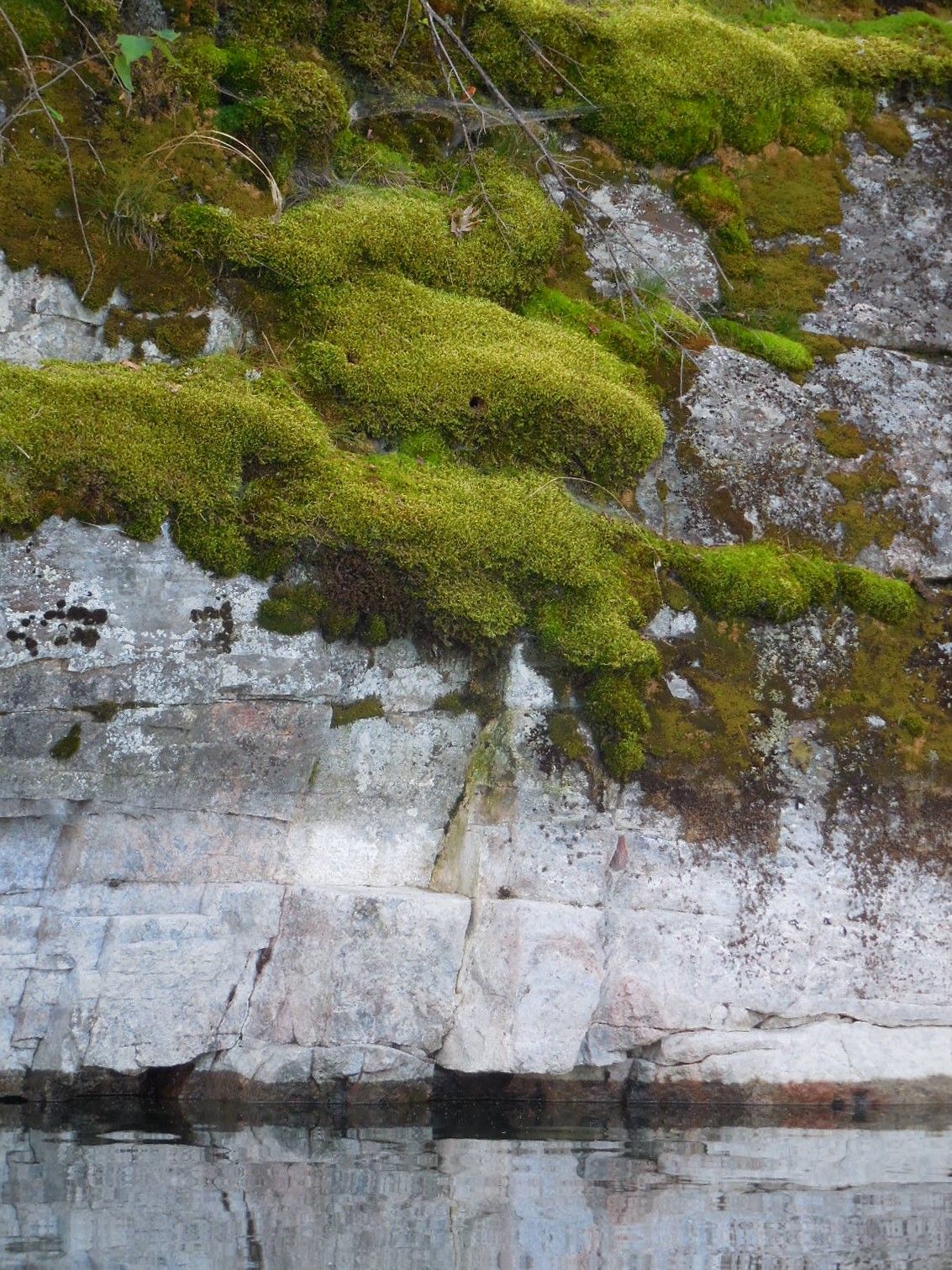
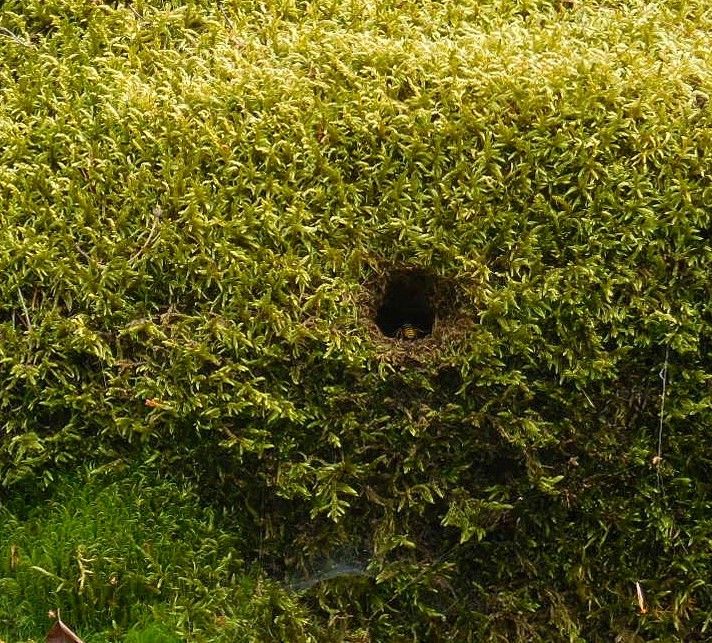
What animal might make its home in these 2 holes in the moss on the side of the cliff, and not fall into the water below - snake, vole...? The day I returned with a camera, I got my answer as I saw the cliff dwellers zooming in - by air! Their nest did not make it into the next summer.

Each summer we are happy that the bat (bats?) returned to roost, behind the shutter, near the front door. We wonder where it stays before the shutters are opened for the season. Last year, for the first time, another bat roosted on the back side of the house. We thought it had moved behind the front shutter, by the end of summer, but no! What a surprise to see this fellow clinging to the paint as we closed the shutter for the season.
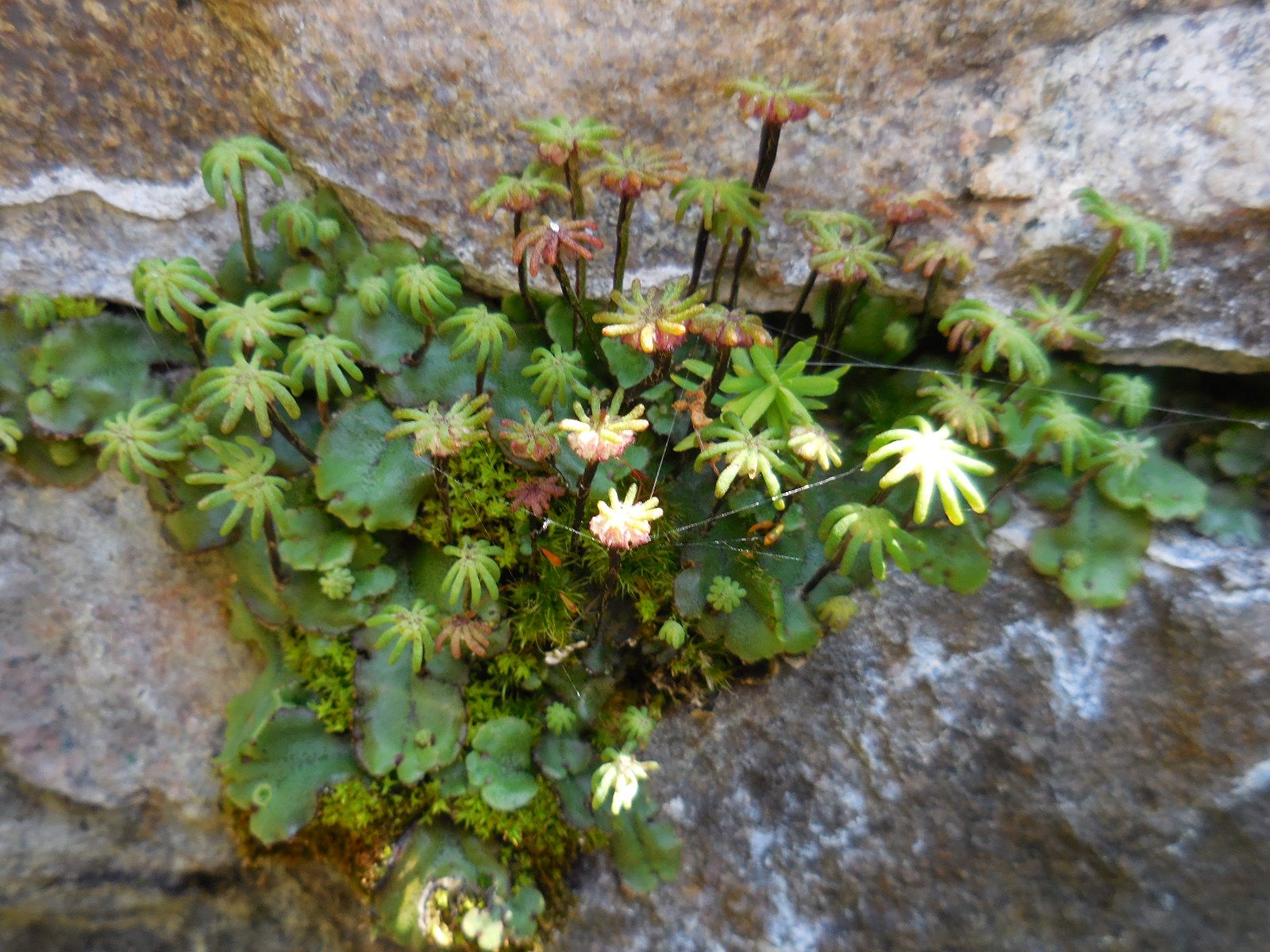
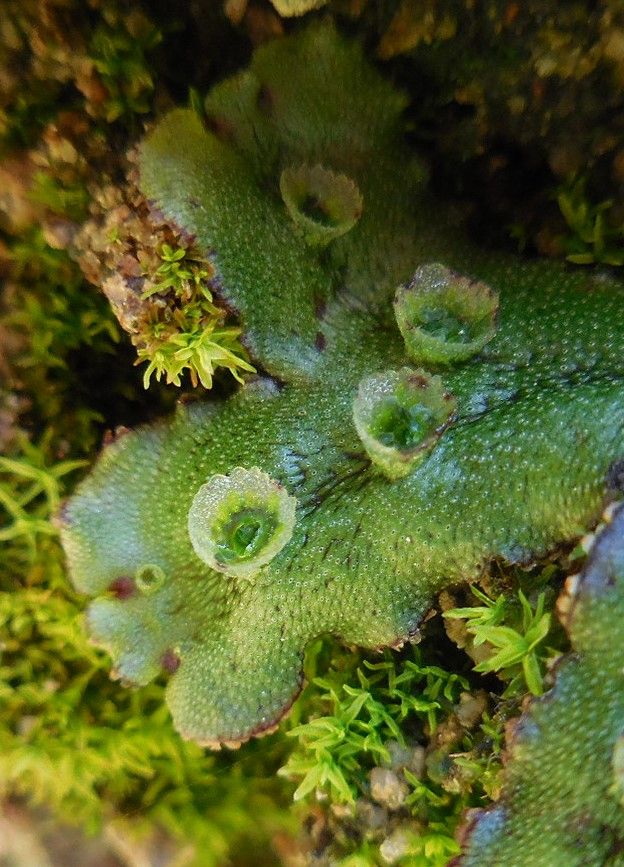

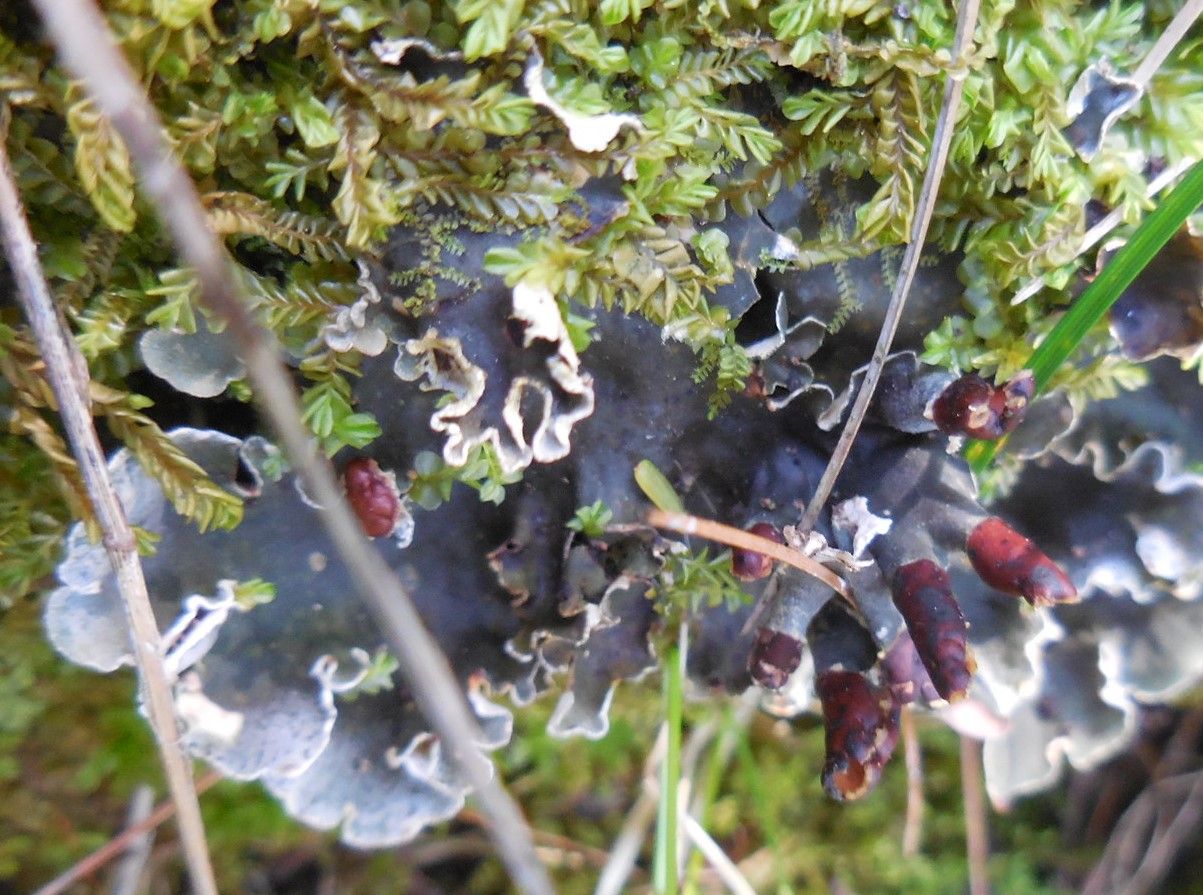
One of the island tasks is weeding the patio wall. To check, I look over the edge - usually a birch has sprouted - but once I was surprised by star-shaped umbrellas (sexual stage) of liverworts and the little cups (asexual stage). Liverworts have an interesting life cycle. Also on the wall was the charcoal-colored felt lichen(?) with its ruffled edge and dark red structures.
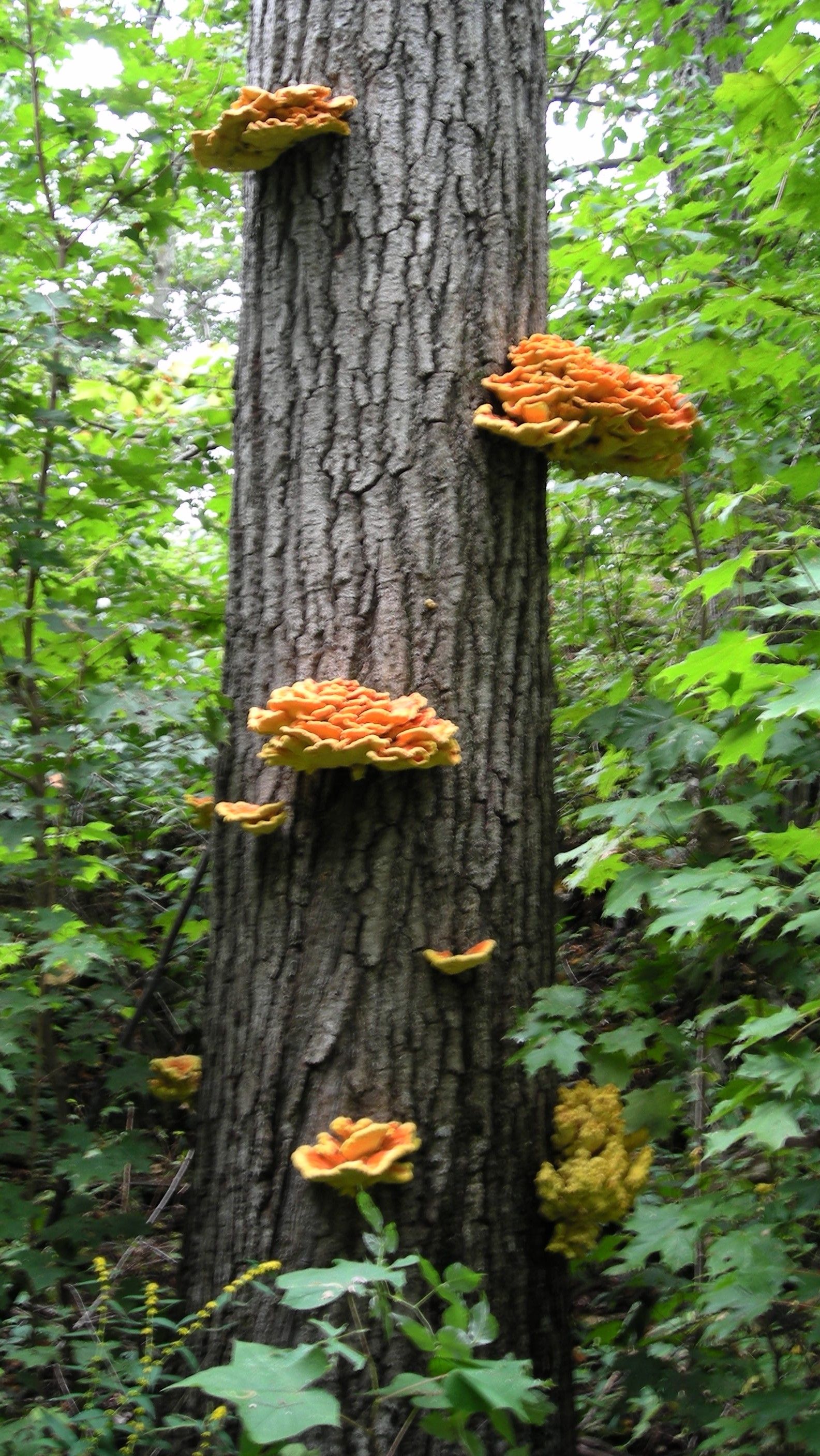
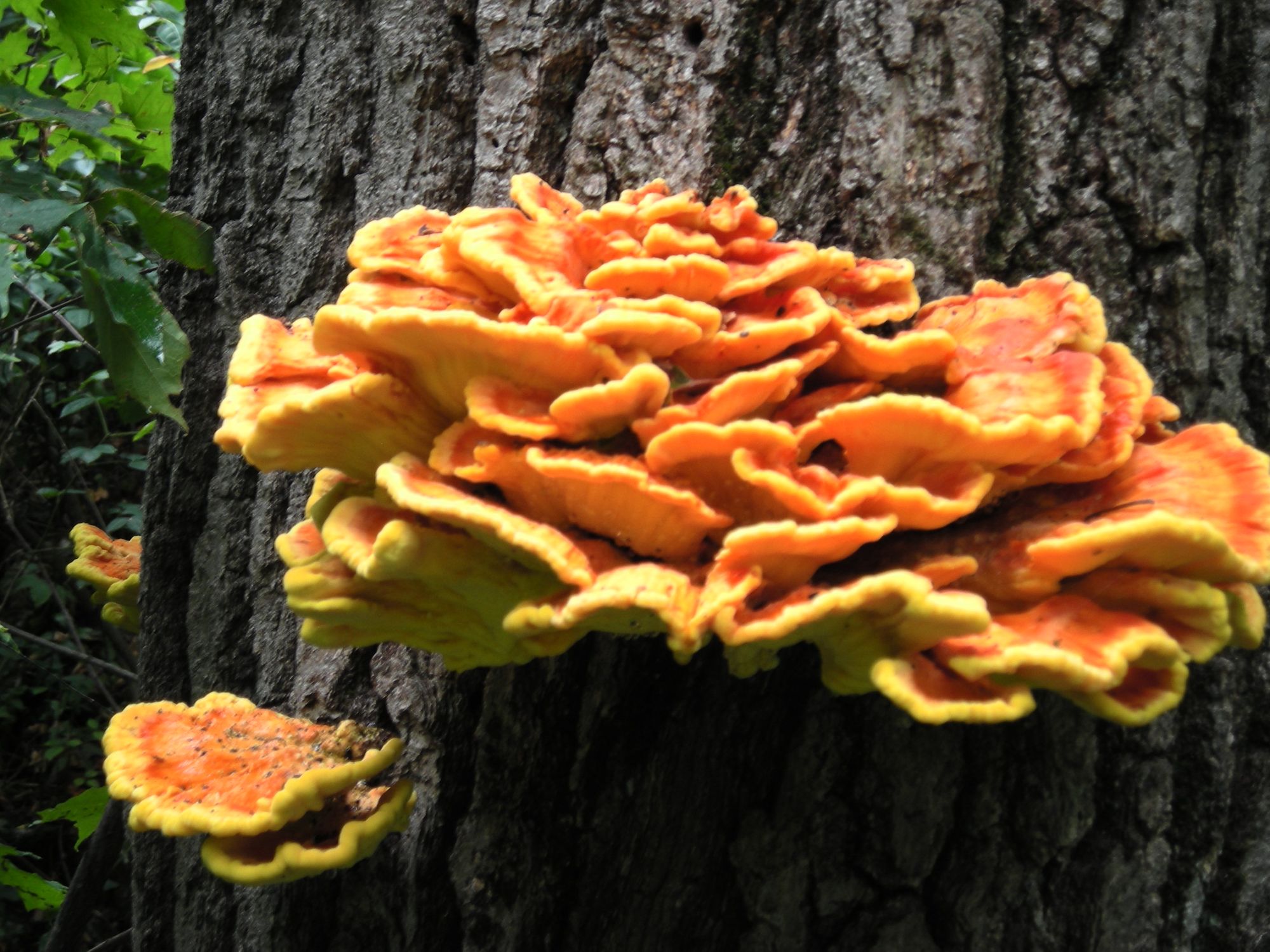
This sulfur shelf fungus is a type we saw as kids, at the base of an oak along the path, where its neon-bright color seemed to glow in the dusk. Was surprised to see the fungus growing-up an oak trunk years later.

Oaks are host to oak galls. This gall is broken-open showing its delicate interior structure and speckled exterior.

Another critter liking oak is this Tussock Moth caterpillar with its exuberant yellow mounds, red cylinders, and prominent bristles.
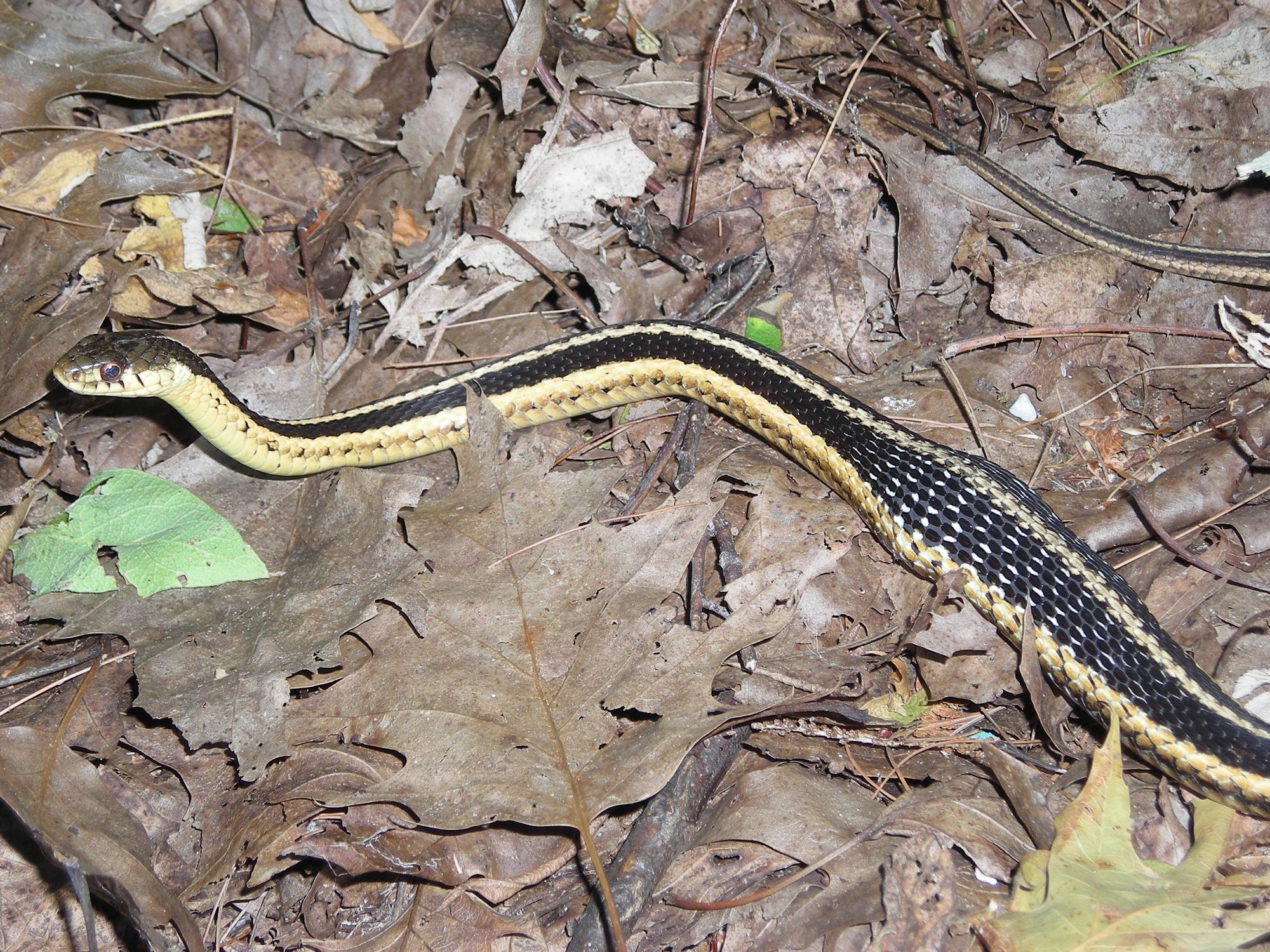
This ribbon snake has shown up a few times over the years. Earlier that week it was on the other side of the island, its bulge bigger and closer to its head. Whatever it ate caused the scales to stretch apart, exposing the otherwise hidden gray and yellow colors and shapes of its scales.
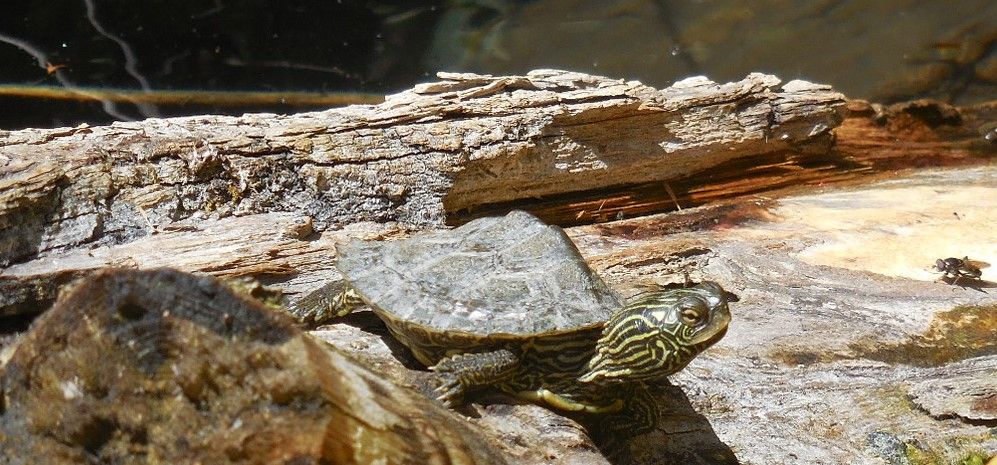
Gotta get outa here! This turtle wasn't happy that I was close, so it was moving out. I was trying to re-find a small green turtle seen the day before and had returned with a camera. That was the only time I'd seen a green turtle in our bay. From a distance it appeared to be a piece of bright green litter floating on the water.
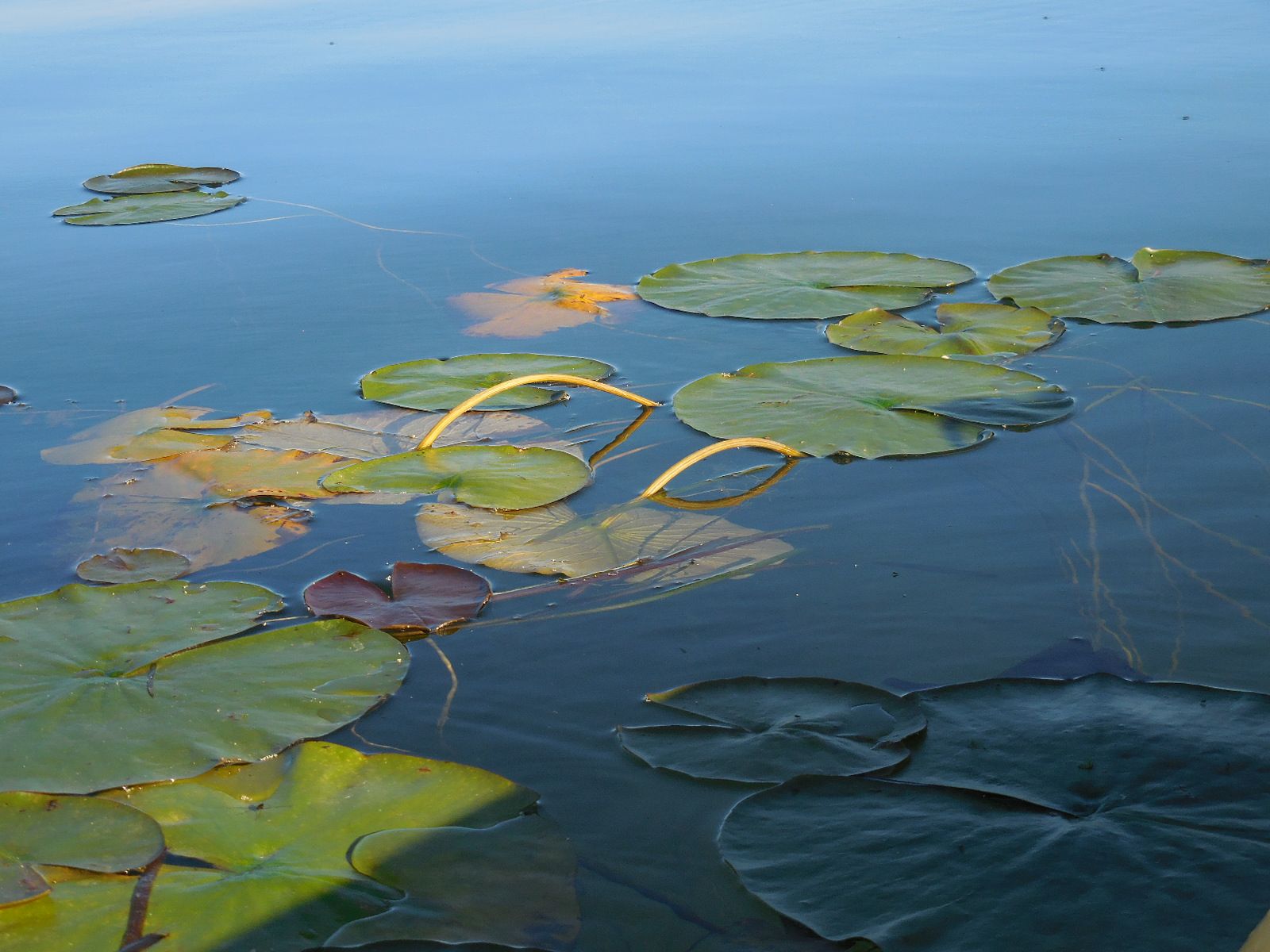
In a windy week, a number of the large lily pads flipped over, exposing their 'golden arches'. Here are a couple of arches glowing in the early morning sun.
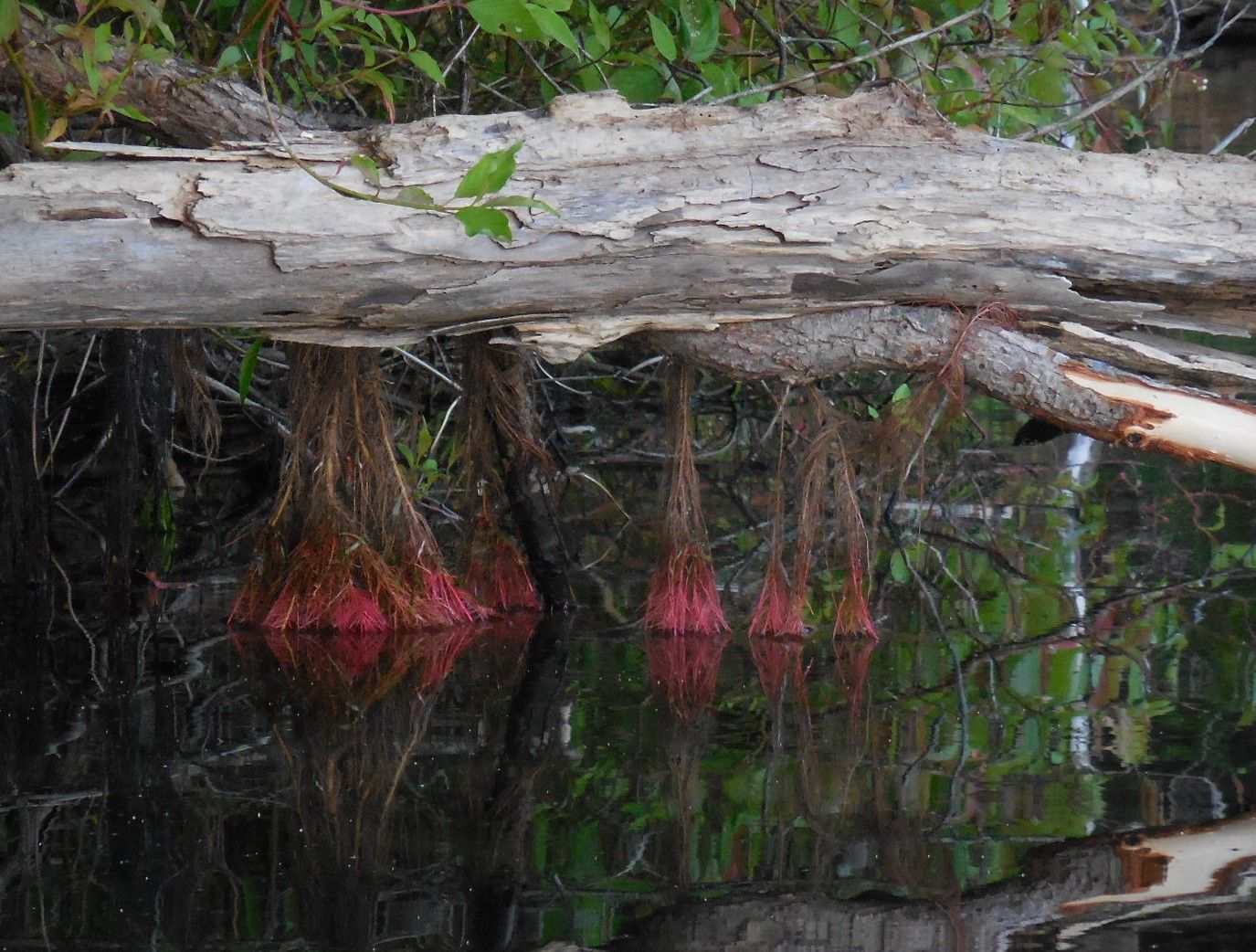
The willow grew new (red tipped) roots along the fallen branch, while the water was high. Once the water receded, the roots were exposed at a number of islands, giving a tropical feel.

Was enjoying the curls and zigzag edges of Hawkweed blossoms, when this brilliant green pollinator arrived.
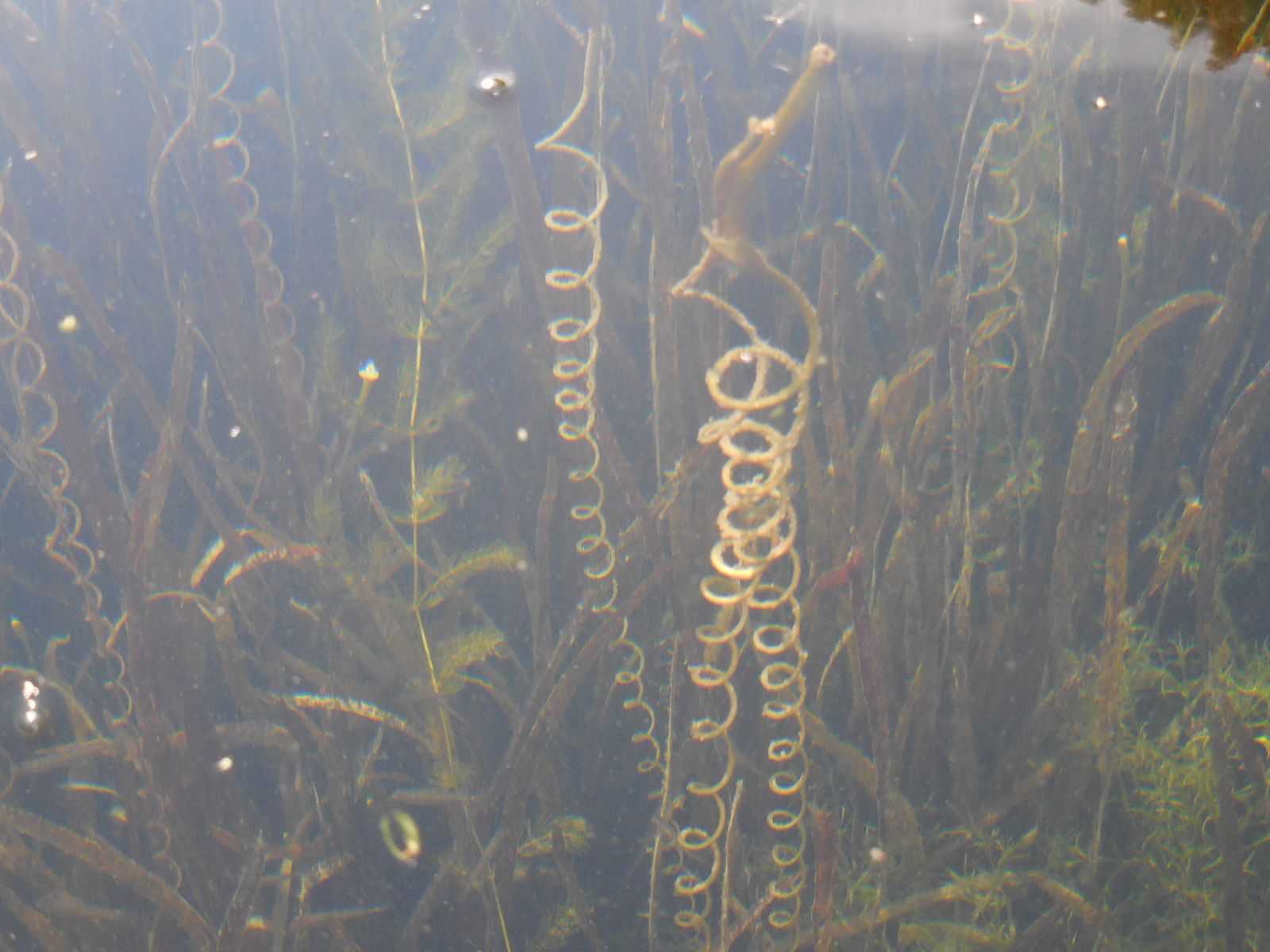
The tiny white blossoms on the surface caught the early morning sun and I kayaked over to see what they were. Their spiral stems made me chuckle. Probably an eelgrass (Vallisneria).

Numerous other geese mixed and milled around the bay, but this family kept its discipline and gained a couple of goslings over the week!
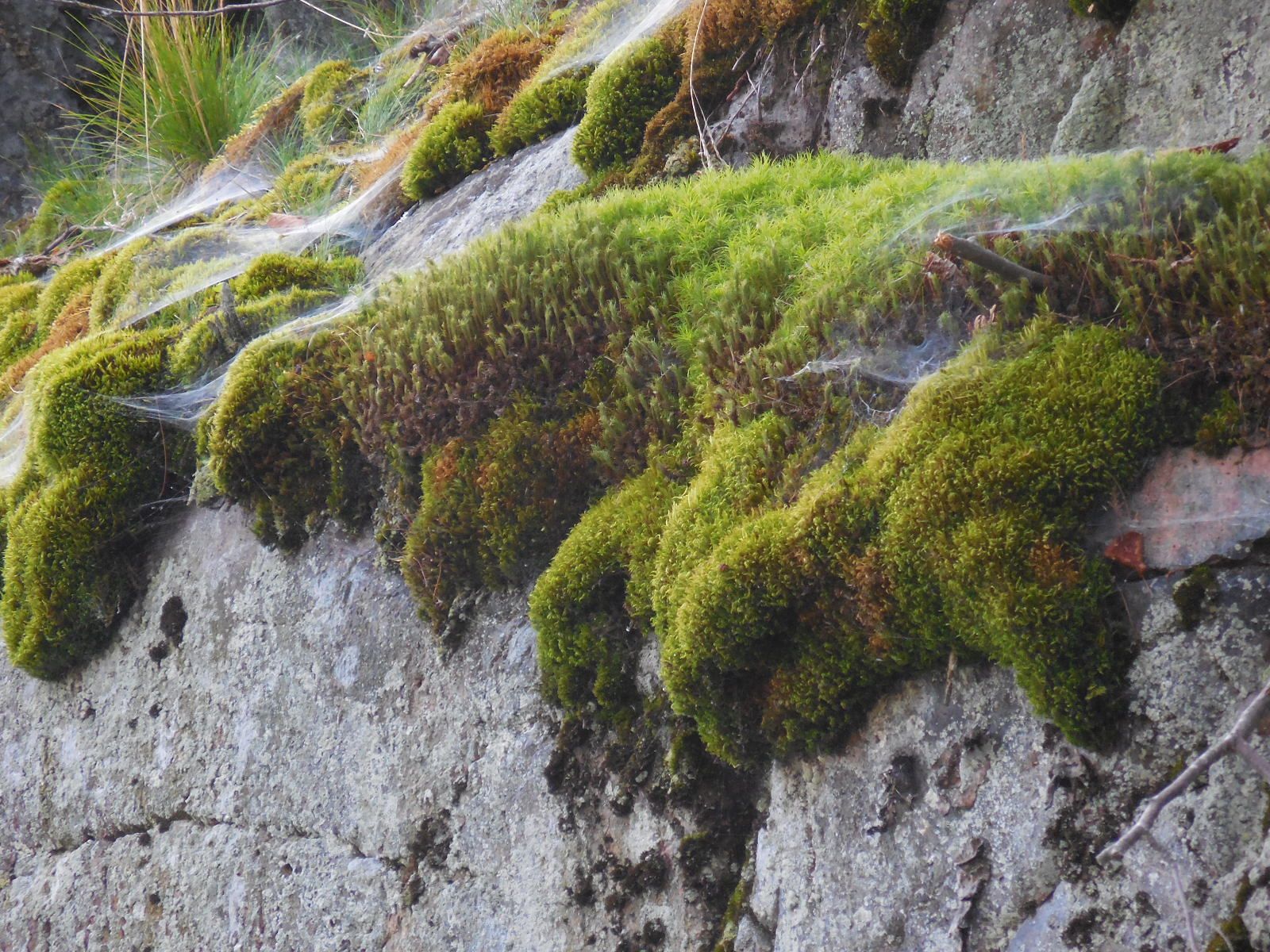
The extensive spider webs caught my attention along with the many shades and textures of the moss, the overall rounded shape of the mosses, and the spiky grass in the background. A day or two after a good rain, the moss will still be dripping.

An introduced orchid, Helleborine grows in several spots on the island. We're not often there when it is in full bloom, so this was a treat to see. The plants often have petals that are mostly green and brown; this one has more purple color than most have.
By Winifred McGowan
Winifred (Winky) McGowan came to the islands at a young age to visit her grandmother, aunt, and sometimes her cousins, and continued coming with her parents for several years. She and her husband became owners of Little Sagastaweka Island in more recent years. Sagastaweka Island, the other island bought in the late 1800s by her great grandparents, the Finleys, was a gathering place for a large, extended family.
Winifred spent much of her working life in conservation related jobs, inspired by her love of plants, maps, and the outdoors. You can guess that the islands were part of that inspiration.
Editor's Note: Right now I am sheltering in place in Ottawa, ON. However, I am smiling from ear to ear. Winky McGowan is our neighbor living on Little Sagastaweka Island. Her aunt, Helen Wright Greuter, sold us our two acres in 1984 and much of what Winky photographed for TI Life are scenes nearby. I am smiling as I never realized what wonderful small-scale items and curiosities are there for me to see on every walk!
Posted in: Volume 15, Issue 4, April 2020, Photography, Nature
Please click here if you are unable to post your comment.
